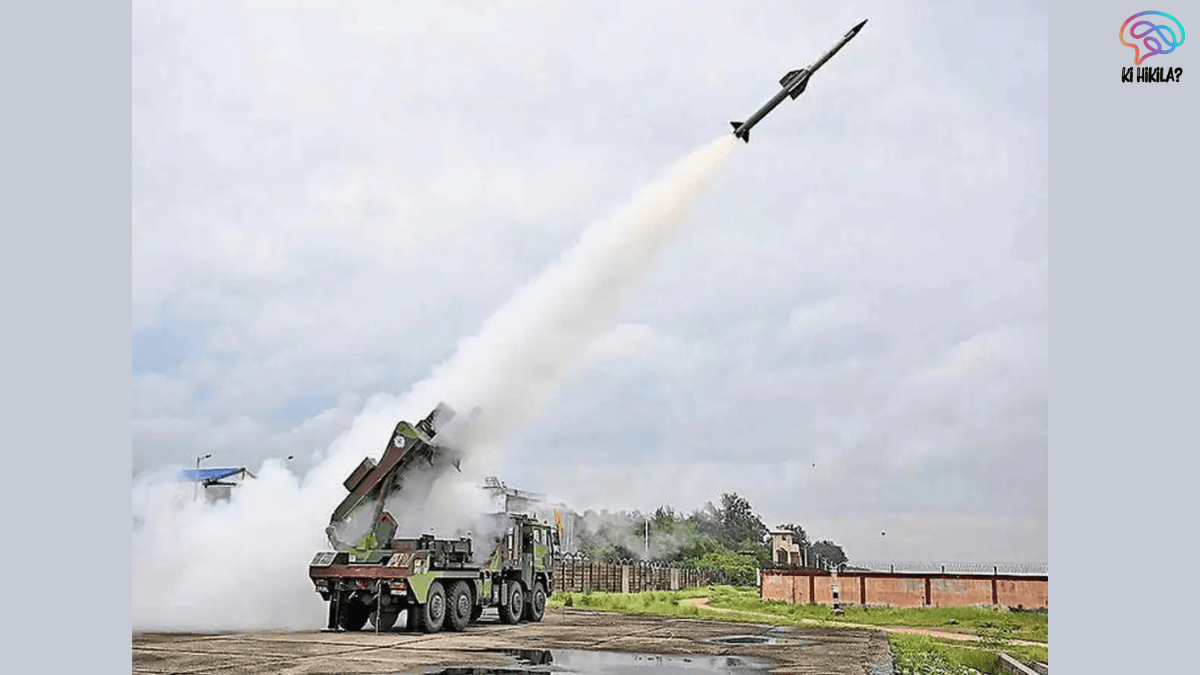Sudarshan Chakra Air Defence Mission has emerged as a groundbreaking initiative aimed at transforming India’s defence architecture. Announced as an indigenous multi-layered air defence system, this mission seeks to safeguard strategic, civilian, and national assets from evolving aerial threats such as drones, missiles, and hostile aircraft. By integrating cutting-edge technologies with a “whole-of-nation” approach, the project highlights India’s determination to remain self-reliant and prepared in an increasingly volatile global security landscape.
Mission Overview
The Sudarshan Chakra mission is often described as India’s equivalent to Israel’s Iron Dome, but with a broader and more indigenous vision. Unlike conventional defence systems, it combines detection, acquisition, and neutralisation of enemy air vectors into a unified shield.
The system incorporates both soft-kill measures—including cyber and electronic warfare techniques that disable threats without physical destruction—and hard-kill measures like surface-to-air missiles and directed energy weapons such as lasers. This dual capability makes it both a sword and shield, designed to defend against a wide spectrum of threats ranging from high-speed ballistic missiles to low-flying drones.
Technological Components

At the heart of the Sudarshan Chakra mission lies a blend of advanced weapon systems already tested by India’s Defence Research and Development Organisation (DRDO). Key components include:
- Quick Reaction Surface-to-Air Missiles (QRSAM): Capable of rapidly engaging incoming targets at medium range.
- Very Short Range Air Defence Systems (VSHORADS): Designed for close-range protection against low-altitude threats.
- 5-kilowatt lasers: Part of India’s leap into directed energy weapons, allowing for instantaneous threat neutralisation.
In DRDO’s maiden flight test of the Integrated Air Defence Weapon System, these components showcased their potential to operate cohesively. By combining kinetic and direct energy weapons, the system provides layered protection—essential for modern-day conflicts where aerial threats often come in waves or swarms.
Multi-Domain Integration
A standout feature of Sudarshan Chakra is its reliance on multi-domain integration. Unlike traditional air defence systems that depend primarily on ground-based radars, this mission seeks to fuse data from:
- Ground-based sensors
- Airborne platforms
- Maritime and undersea surveillance
- Space-based satellites
This ISR (Intelligence, Surveillance, Reconnaissance) network will provide a unified, real-time picture of potential threats. Such integration enables faster decision-making and ensures that India can neutralise threats before they inflict damage.
Advanced Computing and AI
The Sudarshan Chakra Air Defence Mission is also a major leap in applying artificial intelligence and emerging technologies to defence. AI algorithms, big data analytics, and quantum computing will help process massive volumes of sensor data in real time.
This ensures:
- Rapid detection: Identifying threats within seconds of their appearance.
- Precise decision-making: AI-driven systems can suggest optimal countermeasures instantly.
- Self-learning adaptability: With each engagement, the system becomes smarter and more efficient.
By integrating large language models and quantum technologies, Sudarshan Chakra aspires to be not just reactive, but predictive—anticipating threats before they occur.
Implications for National Security
The announcement of the mission resonates with General Chauhan’s call for India to be “Shashastra” (armed), “Suraksit” (secure), and “Aatmanirbhar” (self-reliant). Beyond mere defence, the Sudarshan Chakra reflects India’s commitment to technological sovereignty.
It signals:
- Military preparedness: Ensuring India is always ready to defend its sovereignty.
- Public awareness: Encouraging citizens to understand modern defence doctrines.
- Strategic depth: Combining traditional wisdom from India’s history with contemporary warfighting strategies.
The project also strengthens India’s position in global geopolitics, showcasing the nation’s capability to develop its own advanced defence systems without over-reliance on foreign powers.
Lessons from Modern Conflicts
India’s defence planners have been closely studying recent conflicts, such as Operation Sindoor, which underline the unpredictability of modern warfare. From drone swarms to cyber warfare, the battlefield is no longer restricted to traditional fronts.

The Sudarshan Chakra Air Defence Mission embodies the timeless principle: “If you want peace, prepare for war.” By blending lessons from the Mahabharata and the Gita with modern military science, India demonstrates a holistic approach to security—anchored in both tradition and innovation.
Conclusion
The Sudarshan Chakra Air Defence Mission is more than a technological project—it is a strategic doctrine in action. By uniting advanced weapons, multi-domain integration, and AI-driven decision-making, India is building a comprehensive shield against 21st-century threats.
As the system progresses through testing and deployment, it will not only reinforce India’s defensive capabilities but also strengthen its image as a rising technological and military power. Ultimately, the mission serves as a reminder that true peace and prosperity rest upon vigilance, preparedness, and innovation.




